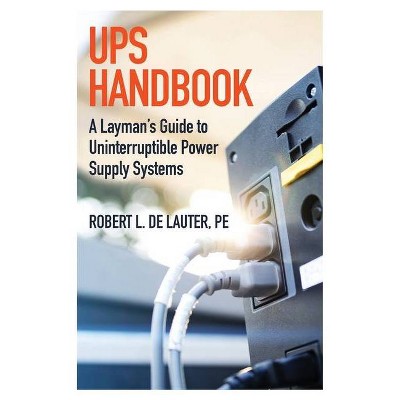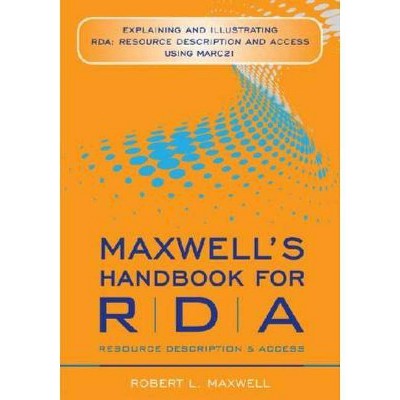UPS Handbook - by Robert Delauter (Paperback)

Similar Products
Products of same category from the store
AllProduct info
<p/><br></br><p><b> Book Synopsis </b></p></br></br><p>Not an engineer, but need to know the basics of battery backup power? <em>UPS Handbook</em> breaks down the complex world of Uninterruptible Power Supply systems into simple-to-understand language. If you need to know the basics of UPS systems but not the expertise of how to repair them, this book is for you.</p><p>- What is an Uninterruptible Power Supply system?</p><p>- How do they work?</p><p>- Which is right for you?</p><p>- What is a UPS topology?</p><p>- What maintenance is needed?</p><p>- What is the most preventable failure?</p><p>- Batteries: what are they, and why are they important?</p><p>- What are the advantages of modularity?</p><p>The author answers these questions and more in <em>UPS Handbook, a Layman's Guide to UPS Systems.</em></p><p>Learn from others in case studies highlighting the problems they experienced and how to prevent them from happening to you.</p><p>After finishing this helpful resource, you will not only have the knowledge to make informed decisions about your backup power system, but you will speak the language of electricians, engineers, and technicians.</p><p><br></p><p/><br></br><p><b> Review Quotes </b></p></br></br><br><p>Robert L. DeLauter's UPS Handbook is aimed at an audience that is often neglected by the UPS industry. Manufacturers of UPS equipment have detailed training standards for the technicians that will be working on these units in the field. But for every UPS maintenance and repair expert, there are dozens of others involved in specifying, selling, distributing, installing and using this equipment who have only a vague notion of how these devices work. This situation sometimes leads to frustrating and expensive misunderstandings and miscommunication among the various parties. DeLauter's introduction to UPS systems is exactly the sort of preparation that can help to prevent these problems, potentially saving the customer thousands of dollars while also helping the seller make more competent and confident recommendations and perhaps even close more sales.</p><p>The book is not overly technical or overly long, so it can easily be read from cover to cover to provide a concise overview for those involved in making UPS purchasing decisions or anyone new to the UPS field. It can also be used as a reference, and the clearly labeled sections on the contents page will help you find the information you need quickly. The book is divided into two parts, with the bulk of the material devoted to the UPS system itself, including separate sections for operating modes, voltage options, topologies, maintenance, etc. The second part of the book is dedicated to batteries and includes a discussion of battery types and the maintenance they require. The language used throughout is beginner friendly, and technical jargon is clearly defined whenever it is mentioned. The plentiful drawings are clear and easy to understand. DeLauter provides real-world case studies and common-sense analogies to illustrate his points and de-mystify topics such as power factor and slew rate.</p><p>As DeLauter mentions in his discussion of consultants, it's better to invest a bit more in the preparation stage rather than working around a poor plan for years to come. Any layman working in or around the UPS industry would do well to spend a few hours with this book, or at least have it handy when a confusing question arises. I have often lamented the lack of a single source I could recommend to anyone needing a comprehensive introduction to UPS systems. I now have that source, and I will be directing my co-workers and customers to it.</p><p> </strong></p><p><strong>Sean May</strong></p><p>Applications Support Engineer</p><p>Dual-Lite/Compass Life Safety</p><p>HUBBELL LIGHTING, INC.</p><p><br></p><p><br></p><br>
Price History
Price Archive shows prices from various stores, lets you see history and find the cheapest. There is no actual sale on the website. For all support, inquiry and suggestion messages communication@pricearchive.us




















